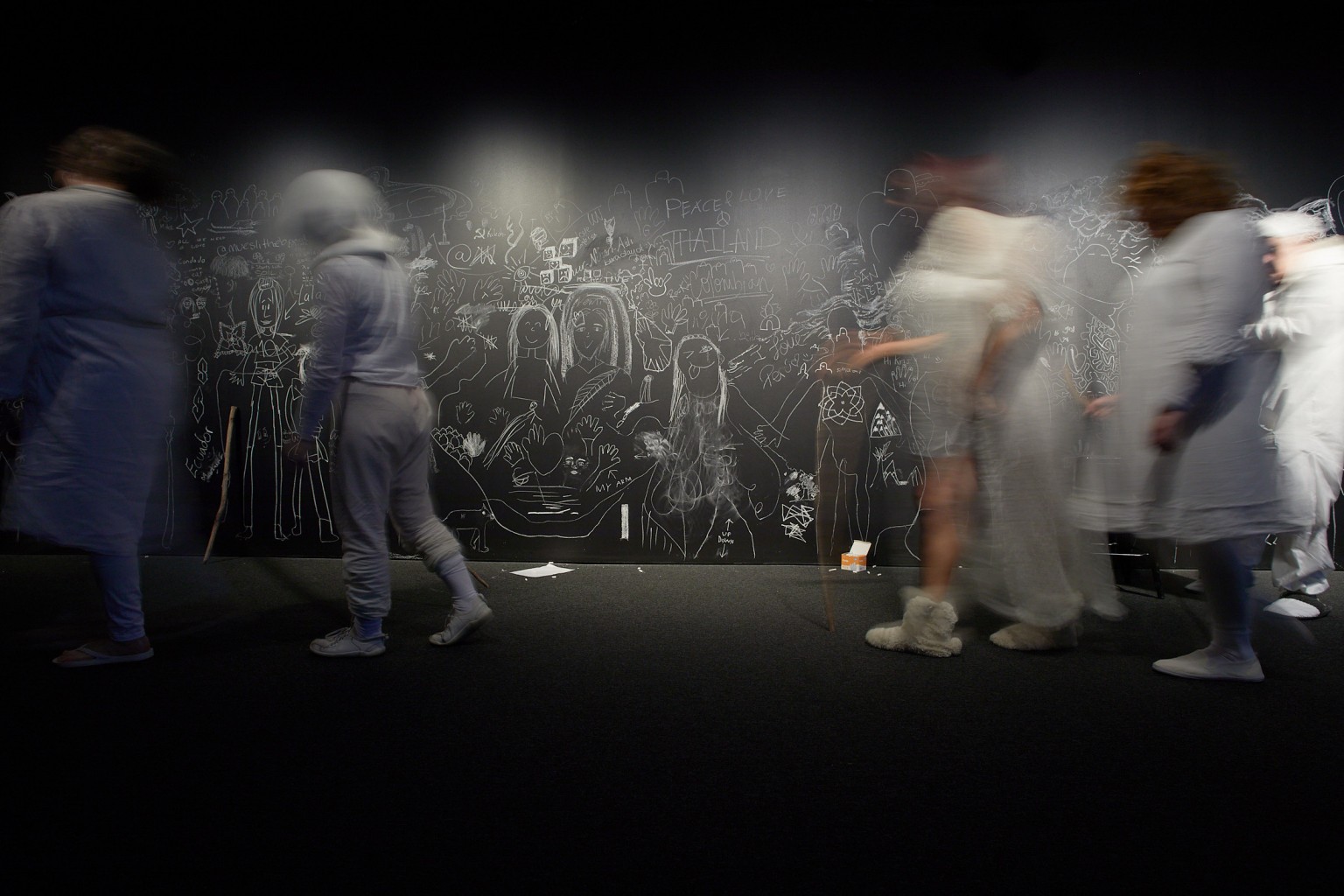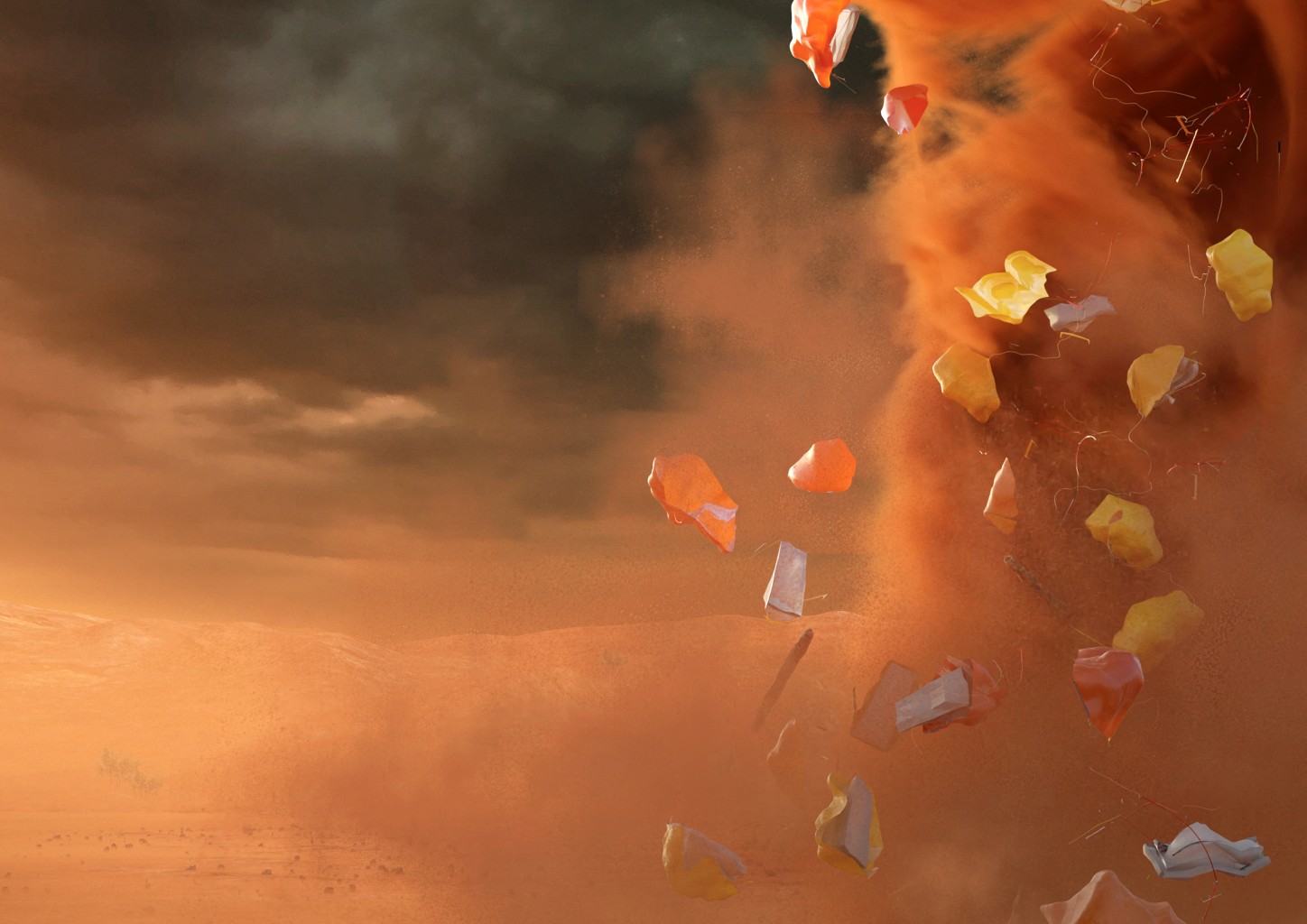
With landscape architect Joshua Zeunert and artist Cathe Stack operating as A. W. E. collective, we curated a special edition of Powerhouse Late: Landscapes on April 20, 2023. The event was an elemental-themed exploration of our cultural relationships with landscapes, and featured an immersive museum experience. The audience were offered walking sticks to guide them through the museum; the sticks were collected from Bundanon Art Museum and then frozen by the Powerhouse conservation team prior to distribution.
The program included:
River : Jennifer Peedom & Joseph Nizeti
Phantom Ride : Daniel Crooks
Wattie & Wheatbelt Anticipatory Archive : Perdita Phillips
Sonus Maris : Nigel Helyer & UNSW New Music Collective
Wall drawing & music place-scapes : Sarah Jane Moore & Michael Galeazzi
Performance : The Sleep Walkers
Feral Atlas : Anna Tsing, Jennifer Deger, Alder Keleman Saxena & Feifei Zhou https://feralatlas.org/
Glass Gardens : UNSW New Music Collective https://www.theglassgardens.com/
Band : Manfredo Lament

Ainslie Murray with Panovscott
The design is a process, an object results.
Our traditional mode of architectural practice could be typified as making small projects, with exigent budgets, for largely novice clients. In these situations we invariably find ourselves working closely with those who build our projects and whilst we are quite diligent in determining the particular nature of our architecture prior to the construction process, we find invaluable a process that enables us to engage with those who make and their hard-won wisdoms.
For this competition we were interested in examining how we could simplify our a priori instructions for the particular tapestry structure. In how the elegance of this starting condition might enable complexity resulting in a richness that we could not envisage with our limited skills and resources. In how we might step back a little and facilitate the improvisational involvement of all the wonderful weavers across our country.
We feel the results would enable an object which is not a laconic and easily defined whole, but instead a generous and many-voiced conversation.
With a vertical loom establish 75 warp threads at 12 threads to the inch. eeach thread is to be wool. Alternate each thread with three diameters, 20ply, 6ply, 12ply in the rondo pattern (abaca) starting with the 20ply to the left facing the finished surface. Each thread is to have a different colour which will mimic the visible light spectrum starting with violet to the left. The weft is to comprise 225 threads at 12 threads to the inch. All threads are to be 12ply and white in colour. In establishing the weft the weaver is to improvise such that the warp is revealed periodically in an elongated vertical manner.

The Registry of Itinerant Architectures is an interactive online archive that records encounters with wild, mobile, fleeting and unlikely structures in varied geographic, social, cultural and political settings. It exists on the edge of interdisciplinary art and architecture practice, resisting and disrupting the conventions of architectural experience and record-keeping. The Registry incorporates a dynamic mix of moving image, text and artefact, brought together in an open-access online environment that is available for instant and ongoing global dissemination.
The Registry of Itinerant Architectures is developed by the mobile artist — the Registrar —who walks or moves with mobile communities and repeatedly attempts to apprehend forms of itinerant architecture through observation, imagination, narrative and memory. In doing so, the Registry of Itinerant Architectures poses a twinned question: is this architecture, and who is the architect?
Forms of itinerant architectures may include mobile natural and built architectures, fleeting and invisible structures, condensations and sedimentations, weather events. This is a playful artistic practice that is mobile itself precisely as it investigates other mobilities; the Registry moves with and creates itinerant space with its subjects. Evidence of itinerant architectures is published at www.itinerant.academy to formulate a steady and cumulative body of work. A global audience considers each work as a proposition and then accepts it or rejects it, actively co-creating the Registry over time.



















































